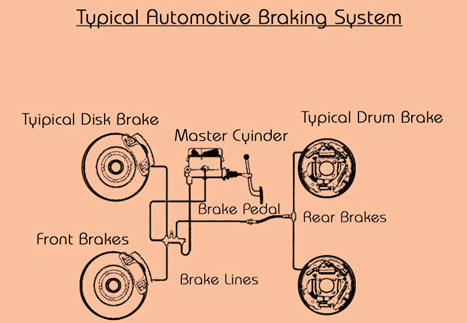
The braking system has a few basic principles. The first part is stepping on the brake pedal, which pushes a plunger in the master cylinder. This will force brake fluid through a series of tubes and different hoses into the braking unit at each wheel. In the second part, the pressure from the brake fluid reaches the braking unit. On a diskbrake, the fluid from the master cylinder is forced into a caliper where it presses against a piston.The piston, in-turn, squeezes two brake pads against the disk (rotor), which is attached to the wheel, forcing it to slow down or stop. With drumbrakes, fluid is forced into the wheel cylinder, which pushes the brake shoes out so that the friction linings are pressed against the drum, which is attached to the wheel, causing the wheel to stop. This process is similar to a bicycle brake where two rubber pads rub against the wheel rim creating friction.
Brake fluid is a type of hydraulic fluid used to transfer force under pressure through hydraulic lines to the braking mechanism near the wheels.Braking applications produce a lot of heat, so brake fluid must have a high boiling point to remain effective, and must also not freeze under normal temperatures. Brake fluid must meet standards that are set by the Department of Transportation (DOT). The current standard is DOT-